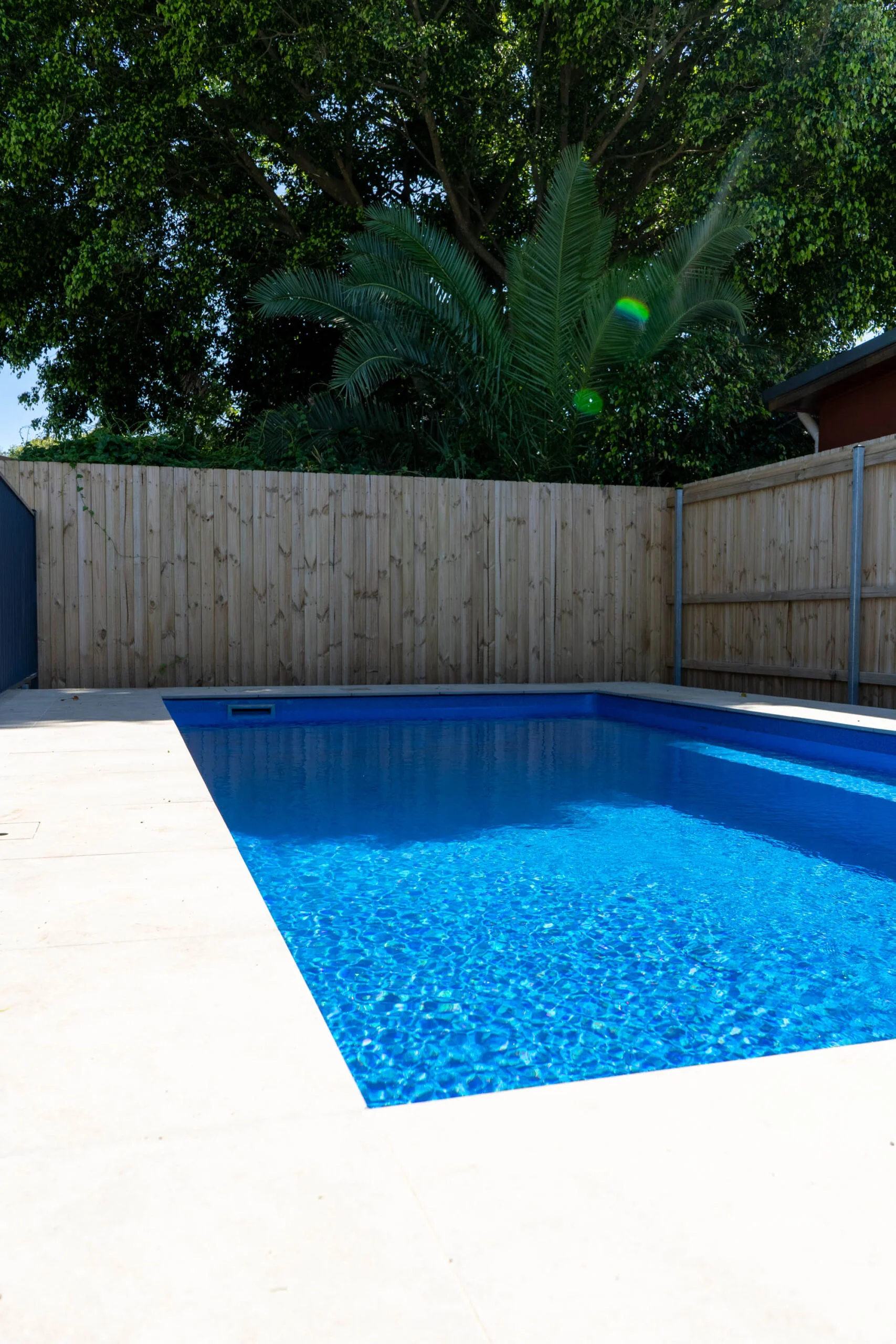When you decide to install a swimming pool, it’s important to follow the protocols and by-laws of your region to ensure your pool meets the required standards. One of the most important things to consider is “How close to the boundary line can I build a swimming pool?”. This is especially important if you have limited space in your backyard and are trying to make the most of the available area.
Building your pool within your property’s boundary line is critical, and it requires careful consideration and planning. Here’s what you need to know.
Understanding Local Regulations: The Key to Perfect Pool Placement
When building a swimming pool, the first rule of thumb is to consult your local council’s regulations. These guidelines dictate everything from pool placement to safety requirements, ensuring your aquatic paradise meets all necessary standards. Each state and territory may have its own regulations, so doing your homework before taking the plunge is essential.
In New South Wales, for instance, pool placement regulations are contingent upon proximity to property boundaries and existing structures. While zoning ordinances generally require a minimum distance of one metre between a swimming pool and the property boundary, specific rules may vary depending on your location.
There are several ways to find your property boundary:
- Title deed and plan of survey: The title deed shows lot number, land size, and boundary measurements; while the plan of survey shows the property’s dimensions, boundaries, and adjoining properties.
- Surveyor’s pegs or boundary markers: These are typically small metal or wooden stakes physically installed on your property to show the boundaries.
- Hire a licensed surveyor. They have the expertise and advanced equipment to conduct a comprehensive survey of the property.
- Online mapping tools: These provide aerial imagery and property boundary overlays that can give you a general idea of the boundaries.
Navigating Pool Placement: Tips for Maximising Space and Functionality
Once you have determined where your new fibreglass swimming can go, it’s time to start designing it to suit the space. Whether you’re working with a large backyard space or a cosy courtyard, the right placement for your fibreglass pool installation is imperative. Here are some of the things you should keep in mind:
- Utilise Existing Features: If you’re working with limited space, consider incorporating existing structures such as house walls or boundary fences into your pool design. This will maximise available space and reduce the need for additional fencing, streamlining the construction process.
- Prioritise Visibility: When positioning your pool, prioritise visibility from your home’s living areas. By strategically placing your pool in a visible location, you can transform it into a focal point that enhances the overall aesthetic appeal of your property.
- Ensure Safety: Safety should always be a priority when building a swimming pool. In addition to complying with pool fencing regulations, gate placement and barrier height should be considered to prevent unsupervised access by children under five.
- Optimise Sun Exposure: Take advantage of the Australian sun by positioning your pool in a north-facing location with ample sunlight. However, be mindful of winds that may impact pool temperature and consider incorporating windbreaks into your design.
- Avoid Obstacles: Avoid obstacles such as stormwater drains, gas lines, and trees. Placing your pool over these obstacles can complicate maintenance and repairs down the line, leading to unnecessary headaches and expenses.
- Consult Early and Often: Engage with your local council and a professional pool builder early in the planning phase. This proactive approach can uncover potential hurdles and streamline the approval process.
- Respect Privacy: Consider the privacy of your household and your neighbours. Strategic landscaping and the use of privacy screens can enhance the enjoyment of your pool area without compromising neighbourly relations.
- Environmental Considerations: Be mindful of the natural environment. Positioning your pool away from large trees can minimise maintenance issues related to leaf litter and root intrusion while also protecting local flora.
- Future Landscaping and Development: Consider how your pool will integrate with future landscaping or property developments. A well-thought-out plan can enhance property value and ensure that your pool area remains a cohesive part of your outdoor living space for years.
Partnering with Pool Professionals: Bringing Your Vision to Life
Designing and building a swimming pool that meets your aesthetic and functional requirements can be complicated, so it’s best to consult with professionals.
Here at Aquify Pools, we specialise in pool design and construction, from fibreglass pools to plunge pools, inground swimming pools to above ground spas. Our team have the knowledge and experience to navigate the complexities of any pool design and construction, to ensure your pool complies with all regulatory requirements and aligns with your goals. Our understanding of local council regulations and approval processes can also help speed up the approval process, so you can enjoy your pool sooner.
So, how close to the boundary line can you build a swimming pool in Australia? This question requires careful consideration of local regulations, property layout, and design preferences. By partnering with experienced pool professionals and following safety guidelines, you can transform your backyard into a haven of relaxation and enjoyment. So, what are you waiting for?







